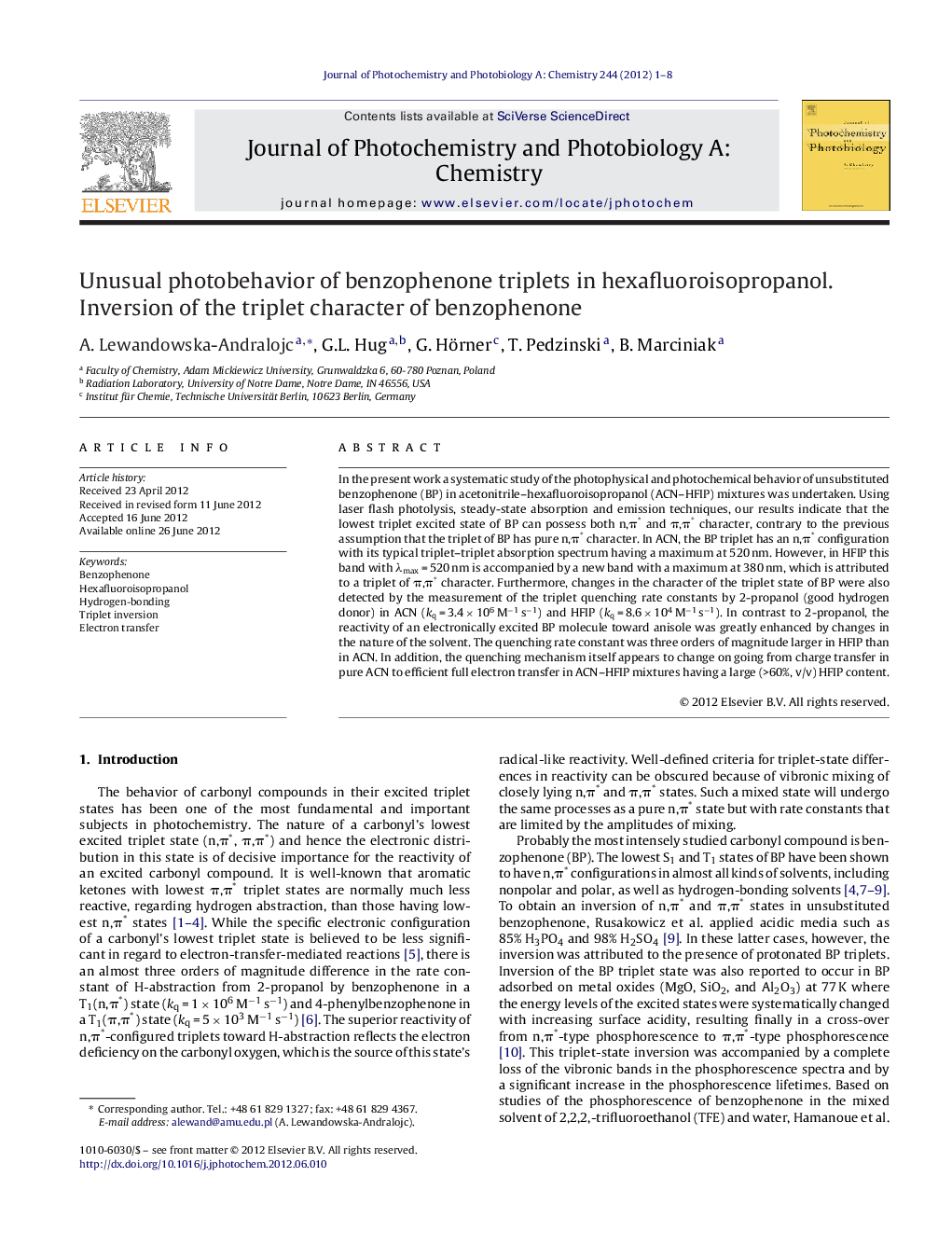| Article ID | Journal | Published Year | Pages | File Type |
|---|---|---|---|---|
| 26921 | Journal of Photochemistry and Photobiology A: Chemistry | 2012 | 8 Pages |
In the present work a systematic study of the photophysical and photochemical behavior of unsubstituted benzophenone (BP) in acetonitrile–hexafluoroisopropanol (ACN–HFIP) mixtures was undertaken. Using laser flash photolysis, steady-state absorption and emission techniques, our results indicate that the lowest triplet excited state of BP can possess both n,π* and π,π* character, contrary to the previous assumption that the triplet of BP has pure n,π* character. In ACN, the BP triplet has an n,π* configuration with its typical triplet–triplet absorption spectrum having a maximum at 520 nm. However, in HFIP this band with λmax = 520 nm is accompanied by a new band with a maximum at 380 nm, which is attributed to a triplet of π,π* character. Furthermore, changes in the character of the triplet state of BP were also detected by the measurement of the triplet quenching rate constants by 2-propanol (good hydrogen donor) in ACN (kq = 3.4 × 106 M−1 s−1) and HFIP (kq = 8.6 × 104 M−1 s−1). In contrast to 2-propanol, the reactivity of an electronically excited BP molecule toward anisole was greatly enhanced by changes in the nature of the solvent. The quenching rate constant was three orders of magnitude larger in HFIP than in ACN. In addition, the quenching mechanism itself appears to change on going from charge transfer in pure ACN to efficient full electron transfer in ACN–HFIP mixtures having a large (>60%, v/v) HFIP content.
► Inversion of the triplet state of benzophenone in hexafluoroisopropanol. ► Unique photobehavior of benzophenone triplets in hexafluoroisopropanol. ► Simultaneous detection of the two types of triplets in benzophenone. ► Solvent controlled changes in the triplet state character of benzophenone.
